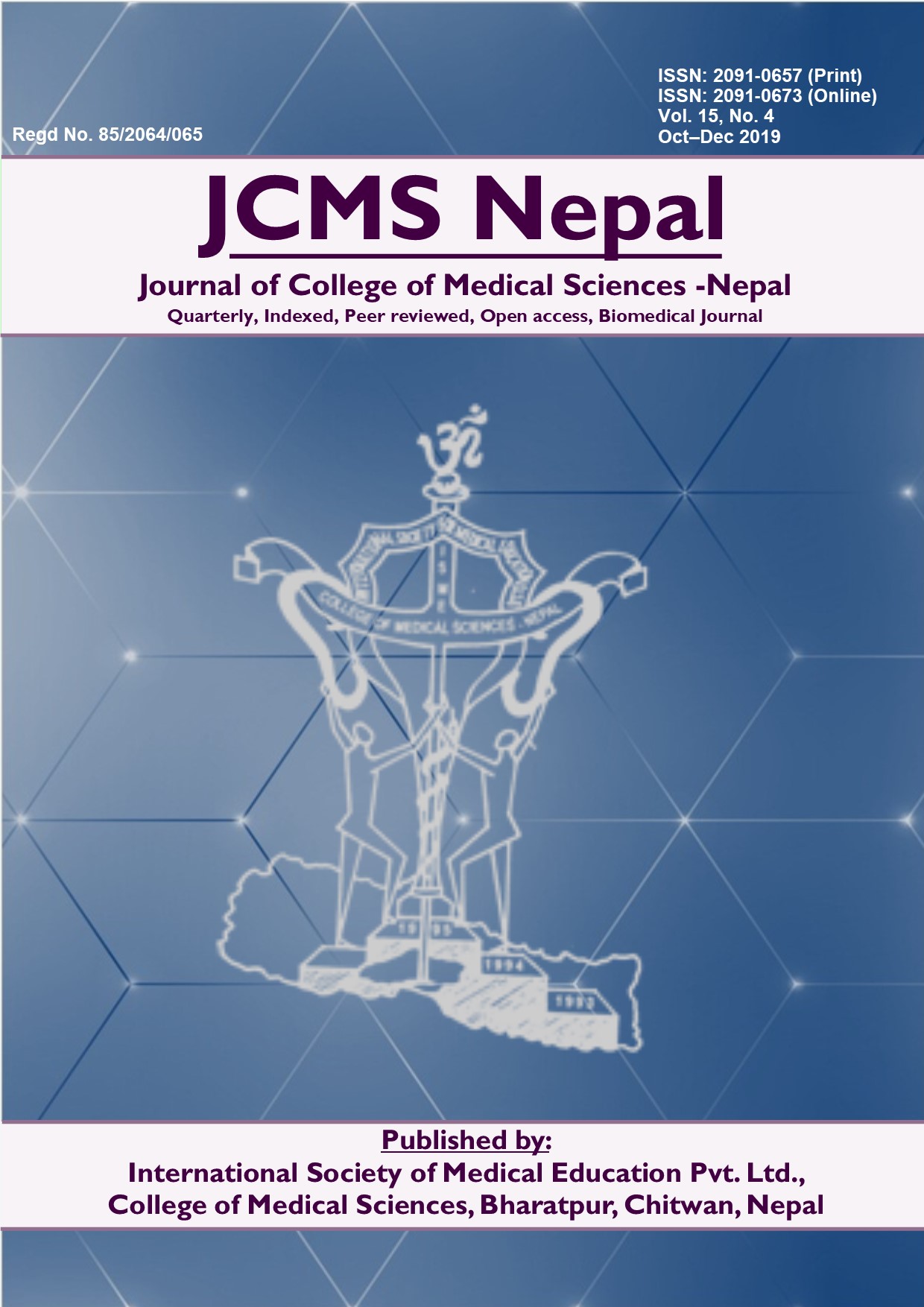Indications and Complications Associated with Coronal Approach to Upper Midface Fracture
DOI:
https://doi.org/10.3126/jcmsn.v15i4.24933Keywords:
complications, coronal approach, upper midface fracturesAbstract
Background: Coronal approach has been widely used by maxillofacial surgeons around the world for wide exposure and fixation of upper midface fractures. Coronal approach hides the scar in hair and completely avoids any incisions on face thus providing better aesthetic outcome. Our aim was to describe the data on indications and complications associated with coronal approach in our patient population.
Methods: Prospective longitudinal study was planned and data was collected from a study population of all patients treated with coronal approach for facial fractures from January 2016 to June 2019. Demographic variables, Type of fracture, hemicoronal or bicoronal approach used and early complications of hematoma, infection and dehiscence were recorded. Delayed complications of neurosensory disturbances, facial nerve weakness, temporal hollowing and alopecia scar in hair bearing area was recorded.
Results: Isolated zygomatic arch fracture was most common indication with 14 cases followed by ZMC fractures with 12 cases, NOE fracture with 7 cases, Lefort III with 6 cases and Frontal bone fracture with 2 cases. Hematoma was not observed in any of our cases. Infection was observed in 2 cases (4.8%), Dehiscence was observed in 5 cases (11.9%), Neurosensory disturbance was observed in 12 cases (28.6%). Permanent neurosensory changes beyond 6 months of follow up was not observed. Alopecia scar was seen in 7 cases (16.7%) and Facial nerve weakness was observed in 4 cases (9.5%).
Conclusions: Coronal approach is best approach in terms of exposure provided to upper midface fractures and can be safely performed with minimal complications.
Downloads
Downloads
Published
How to Cite
Issue
Section
License
This license enables reusers to copy and distribute the material in any medium or format in unadapted form only, for noncommercial purposes only, and only so long as attribution is given to the creator.




